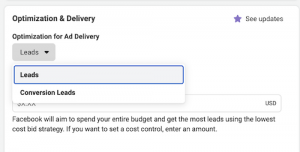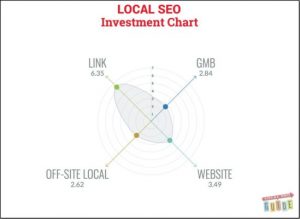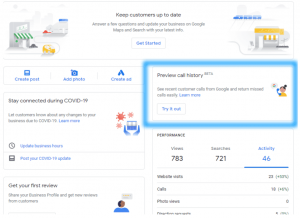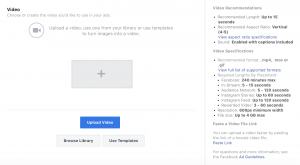Whether we accept it or not, researchers predict we may be in lockdown for longer than planned. Others are saying social distancing could become a fact of life for, not months, but years.
A new world, they say, is on the other side of all this change. But, practically speaking, what can we expect?
Even if things work out according to the most optimistic models, I suspect we will see some exceptional cultural shifts morph into daily norms. In the near term, that means things are sure to be different or even radically transformed in your office life, social life, innovation and tech use, travel and tourism plans—just to name a few.
Here’s my list of the ten most outstanding changes we’ll see. Some are squishier than others, perhaps a bit vague, but all are based on current trends brought about by the Covid-19 crisis.
Innovations in Living Life from Home
When modern cell phones were first designed, someone had the bright idea to include a free service that allowed cellular users to exchange short typed messages with each other. It didn’t seem all that useful in the 90s, but why not? The free service was installed and forgotten about.
Years later, text messaging is the primary form of communication for all adults.
Innovations like this happen when you’re paying least attention, and right now we’re seeing millions of people rearrange their schedules for remote events and Microsoft Teams office meetings. Things are certain to change, but the implications are tough to predict.
But if I had to guess, I think that not only will work-from-home become a normal part of life, but our willingness to communicate via video phone will increase, as will the level of quality, speed, and accessibility for remote get-togethers. Long after Covid-19 is a memory, we will be a culture that will as easily attend a remote event as a live one. As a result, transactions will be done more via video and, because of this, we’ll see the rise of sophisticated video scams and hacking—which will, in turn, result in improved security on a high-powered 5G grid network.
Other unexpected innovations will arise from this new context. But who knows which ones? Regardless, the basic transformation is already underway.
Expanded Support in All Directions
No one could have predicted that Donald Trump would be the president to sign the largest social safety net and economic stimulus bill in American history. As the crisis drags on, or peters out, I believe we’ll probably see a society that is more accustomed to generalized supports of all kinds.
But what does that look like? It may mean that Andrew Yang’s UBI proposal becomes law. Or that, as CEOs get to know more of their employees through the unintended intimacy of remote meetings, more companies become willing to offer better benefits, looser office rules, or more paid sick days. Healthcare will also be on their minds, as prices are set to skyrocket next year. A permanent expansion of unemployment is not unthinkable either, as well as a vastly increased federal budget to cover small business loans, bankruptcies, and debt.
Casual Friday Every Day
There was a time when “working from home” was code for “unemployed and living with parents.” That has come to an end. It was followed by a period of acceptance for remote work as long as it included infrequent, overly formal, and very short remote meetings. And we’re now seeing the end of that as well. It’s a new dawn for working from home.
Now that we’re all doing it, a certain form of “professional casualness” is becoming the norm. Pets and babies appear in the middle of high-powered meetings, participants drop in and out or show up in t-shirts and jeans. Many of the people I see daily clearly haven’t showered in days (I’m not naming any names!).
In any event, this kind of familiarity with the personal lives of workmates is already leading to a more casual professional atmosphere—something in between corporate-formal and college-freshman-dormitory.
Kinder, Gentler Leadership and More Tightknit Teams
As the level of familiarity increases, and as social and business supports expand, colleagues will become closer personally. Business leadership will likely look well on this.
That’s because friendship among teammates almost always translates to higher productivity. As productivity increases, CEOs will find fewer and fewer reasons to break up their rock-solid teams. And why would they? I’d bet that, despite or because of the social distancing, we’re likely to see a boom in work friendships that keep plenty of companies’ returns and levels of productivity remaining high.
Digital Marketing More Crucial Than Ever
Not that it wasn’t critical before coronavirus, but now that we’re all indoors in front of screens all day, digital marketing has taken on an all-encompassing importance.
It’s easy to forget that in the early days of the 2000s, digital marketing wasn’t taken seriously. No one could imagine that some new upstart could displace billboards and magazine ads. But, slowly, brands began to see the value. With the rise of high-quality CRMs and sophisticated positioning techniques, as well as incredibly powerful MarTech, digital ate up more and more of the marketing budget.
After covid, I expect we’ll see a new paradigm that puts digital ads at the vanguard of the marketing industry altogether, where it belongs, as well as a widespread acknowledgment and acceptance that online branding strategies are absolutely key for revenue.
Quality Elevation
This one is simple: as demand increases, so does quality.
With the added attention to online brand strategy, we will see an incredible elevation in the look, feel, and sophistication of brands. Creativity and ingenuity will be at a premium, since the digital landscape will be even more flooded with fresh ideas and interesting approaches to applying marketing tech and tools. The question you will have to ask yourself is: Am I keeping up with the Joneses?
Our Virtual Moment?
A few years ago, there was a big push by the VR industry to get us all to enter the Holodeck Age. In 2015, the New York Times partnered with Google Cardboard to promote its comically DIY and inexpensive headset. Tech leaders were showering us with products, hype, and a coordinated campaign on a daily basis. We were all supposed to be gaming, chatting, and working with high-tech headsets strapped to our faces.
What happened? Google Cardboard did fairly well, actually, but you don’t see it anywhere—in fact I can’t remember the last time I saw a VR headset of any kind. The truth is that VR is a much tougher sell than most people realize. The equipment is expensive and delicate, people dislike wearing them, and most offices see no reason to outfit their conference rooms with complicated new gadgetry.
Today, with everyone stuck at home, VR could easily have a comeback. I’m not saying it’s a definite—in fact much of the news doesn’t look particularly good—but if ever we had a virtual moment, this is it. In fact, if VR doesn’t deliver on all its promises in the next year or two, I doubt it ever will.
A Supernova of Remote Entertainment, Training, Meetups, and More
I see a future in which a growing percentage of not just social or work life but of all of life is experienced via video. Options will be available for things you never thought of—that weekly poker game of yours might go online permanently, attending a movie premier could be done from afar, some nannying or housesitting may be done remotely depending how many cameras are in a house, and remote training for new employees might become the norm. Online education for school kids is another obvious one. In any event, prepare for a lot more remote activity across the board, not just in the areas you’re used to.
Enter Telemedicine
Telemedicine has been around for a while, but it was never extremely widespread. Today people are finally getting the hang of it, and even preferring it. There are an enormous number of illnesses that simply don’t require in an in-person visit. Some cases are actually done better remotely—including when you have mild covid symptoms and don’t want to infect a doctor’s office. And have you ever been frustrated by having to take the time out of your day to go in for a visit just to refill a prescription?
For all this, telemedicine is the answer. Once the pandemic dies down, it will be a regular part of life for all of us.
Business & Finance Articles on Business 2 Community
(37)







